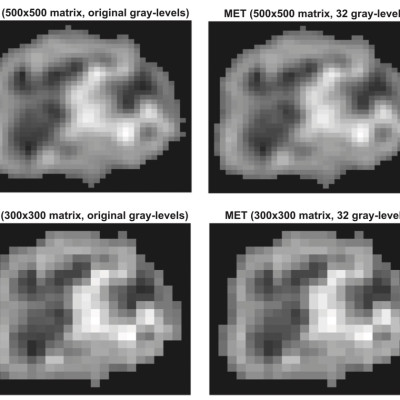Publication
Influence of grey level and space discretization on brain tumor heterogeneity measures obtained from MRIs
D. Molina, J. Pérez-Beteta, A. Martínez-González, J. Martino, C. Velasquez, E. Arana, V.M. Pérez-García
Computers in Biology and Medicine 78, 49-57 (2016)
MOLAB authors
Abstract
Purpose: The study of tumor heterogeneity on medical images is a topic of current interest because of its potential to assess tumor malignancy. Many heterogeneity quantifiers have been proposed. The aim of this work is to study the effect of the dynamic range and matrix size changes on the results of different heterogeneity measures.
Materials and methods: Three glioblastoma patients and one brain metastasis patient showing different image heterogeneity patterns were considered. 16 different image configurations were analyzed for each patient. 16 textural heterogeneity measures were computed including: co-occurrence matrices (CM) features (local heterogeneity) and run-length matrices (RLM) features (regional heterogeneity). The coefficient of variation was used to measure agreement between different configurations.
Results: None of the considered measures was robust under dynamic range changes, so this parameter must be fixed in first term. Then, the CM Entropy and the RLM high grey-level run emphasis (HGRE) were the outstanding textural features due to their robustness under matrix size changes. Also, the RLM low grey-level run emphasis (LGRE) provided robust results when the dynamic range considered was sufficiently high (more than 8 levels). All of the remaining textural features were not robust.
Conclusion: Tumor heterogeneity studies based on images with different characteristics (e.g. multi center studies) should first fix the dynamic range considered. Then, images should be resampled to match the lowest resolution available before computing the textural features. CM Entropy, RLM HGRE and/or RLM LGRE should be used for meaningful textural analysis, since they were robust under matrix size changes.















